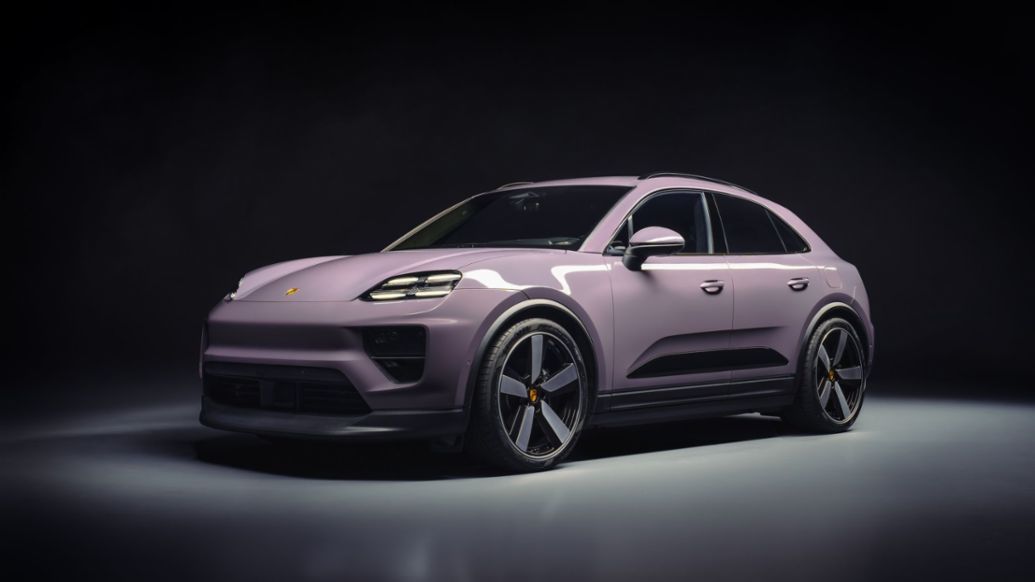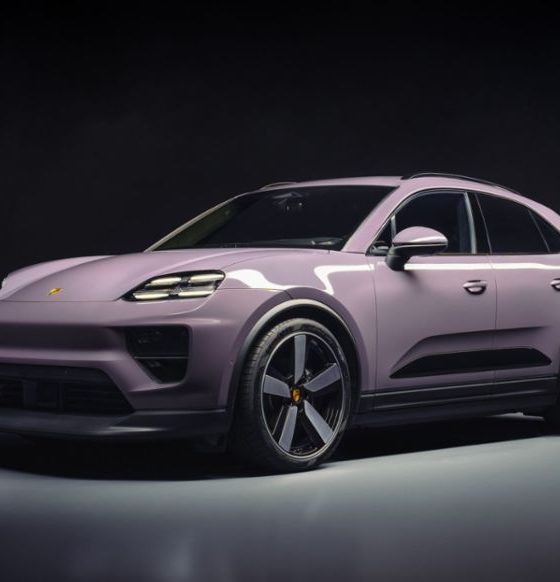Porsche unveiled its Macan EV today, bringing its second all-electric car to market and releasing some interesting details regarding its performance and power.
Ten years after the launch of the Macan, Porsche is bringing the vehicle in what it calls “a bold new direction.”
Porsche has kept a lot of the same design features with the EV version of the Macan, hoping to build upon its already successful status as a mainstay in the company’s lineup.
“Our aim is to offer the sportiest model in its segment with the all-electric Macan. In many ways, we are taking a very successful SUV to a new level,” Jörg Kerner, VP of the Macan for Porsche, said.
Porsche confirms Macan will go all-electric, production to follow Taycan, Cross Turismo
Initially, Porsche plans to bring two Macan configurations to market: the Macan 4 and Macan Turbo, both offering different performance metrics.
- Porsche Macan 4
- 300 KW | 402 HP
- 479 lb-ft torque
- 0-60 MPH in 4.9 seconds
- 136 MPH Top Speed
- Porsche Macan Turbo
- 470 KW | 630 HP
- 833 lb-ft torque
- 0-60 MPH in 3.1 seconds
- 161 MPH Top Speed
Premium Platform Electric with 800-volt Architecture
A lithium-ion battery with a gross capacity of 100 kWh and 95 kWh of usable energy powers Porsche’s new Premium Platform Electric with an 800-volt architecture. This is the first time the automaker is using this on an EV.
It has a DC charging capability of 270 kW, and Porsche said the Macan will be capable of charging from 10 to 80 percent in just 21 minutes under ideal conditions.
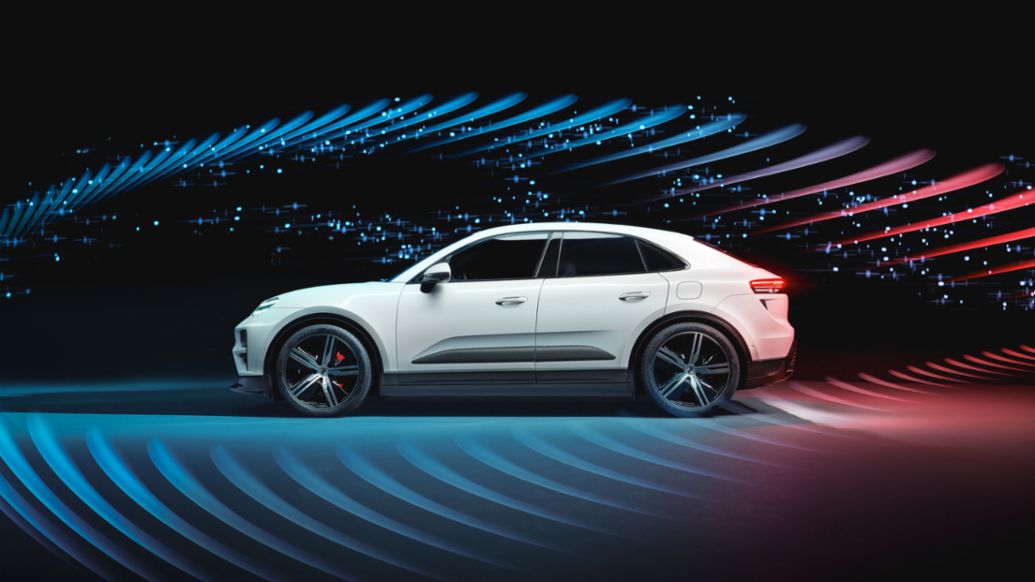
It also explains that, at 400-volt charging stations, a high-voltage switch in the battery pack will enable bank charging by splitting the 800-volt battery into two batteries, effectively creating two 400-volt batteries. This will keep charging efficiency at a maximum without using an additional lithium-ion booster.
Additionally, the Macan EV will use regenerative braking that allows up to 240 kW of power to be recuperated through the electric motors while driving.
Premium Handling
When Porsche initially developed the Macan, it wanted to keep things simple but still allow the vehicle to encapsulate what it calls “quintessential Porsche driving dynamics and a characteristic steering feel.”
This was also put into focus with the Macan EV.
“Thanks to its particularly sporty seat position and low center of gravity, as well as its impressive driving dynamics and steering precision, the new Macan delivers a real sports car feeling,” Kerner adds.
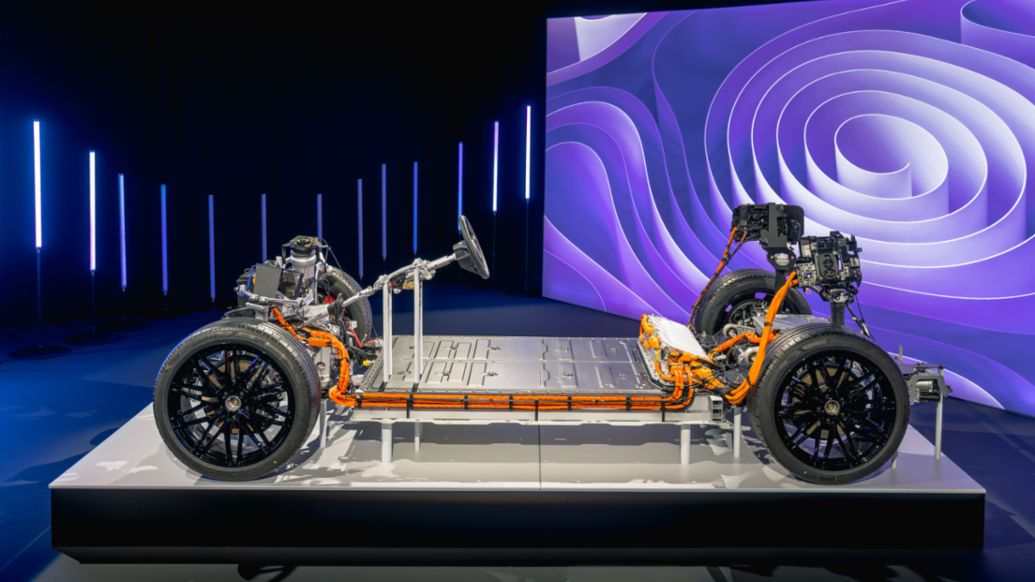
Both configurations of the Macan EV will feature all-wheel-drive with two electric motors. It is also equipped with the Porsche Traction Management system (ePTM), which operates around five times faster than a conventional all-wheel-drive system, and can respond to wheelspin within 10 milliseconds.
Porsche Torque Vectoring Plus, or PTV Plus, is an electronically controlled differential lock on the rear axle. This helps improve traction, driving stability, and lateral dynamics.
Spacious Interior and Increased Room for Luggage
The Macan was designed with practicality in mind. Porsche details that, depending on the configuration and equipment fitted, the capacity behind the rear-seat bench is up to 18 cubic feet.
The frunk also features 2.9 cubic feet of room, which increases the total space in the vehicle to 4.4 cubic feet greater than the previous Macan model.
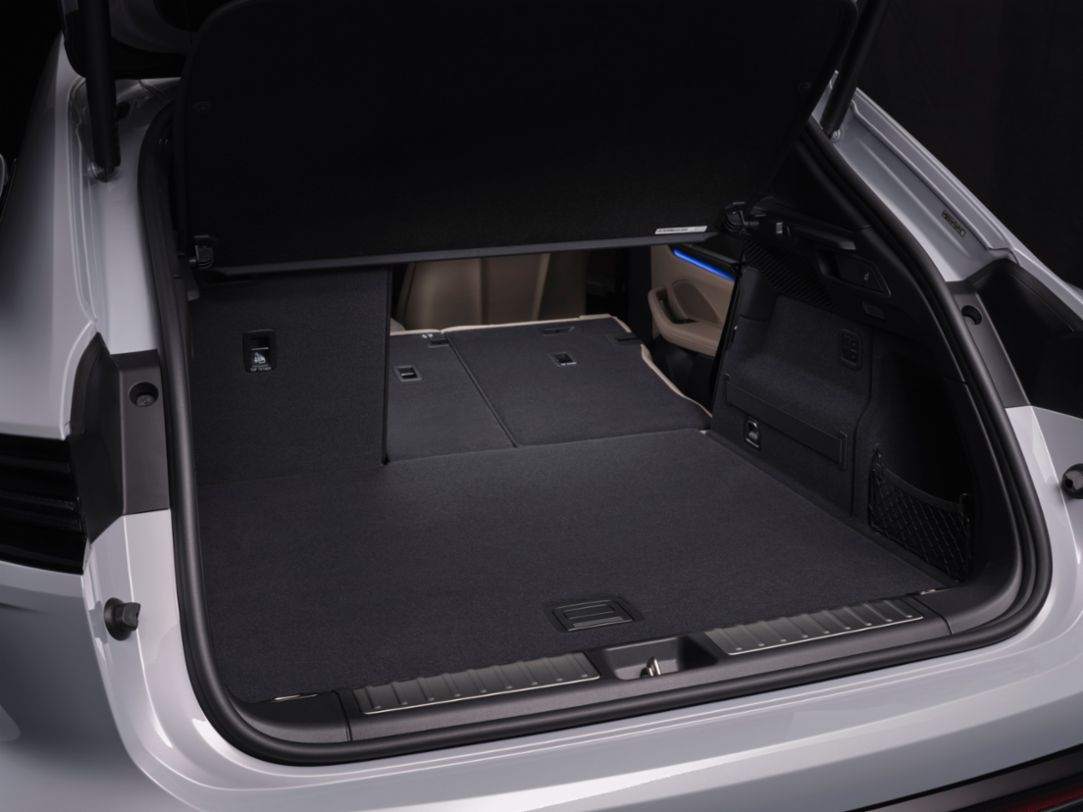
High-Tech Driver Experience
A free-standing 12.6-inch curved instrument cluster is complemented by a 10.9-inch central display.
The Macan EV also features, for the first time, a passenger option to view information, adjust settings on the infotainment system, or stream video content while the car is being driven on its own 10.9-inch screen, which is optional.
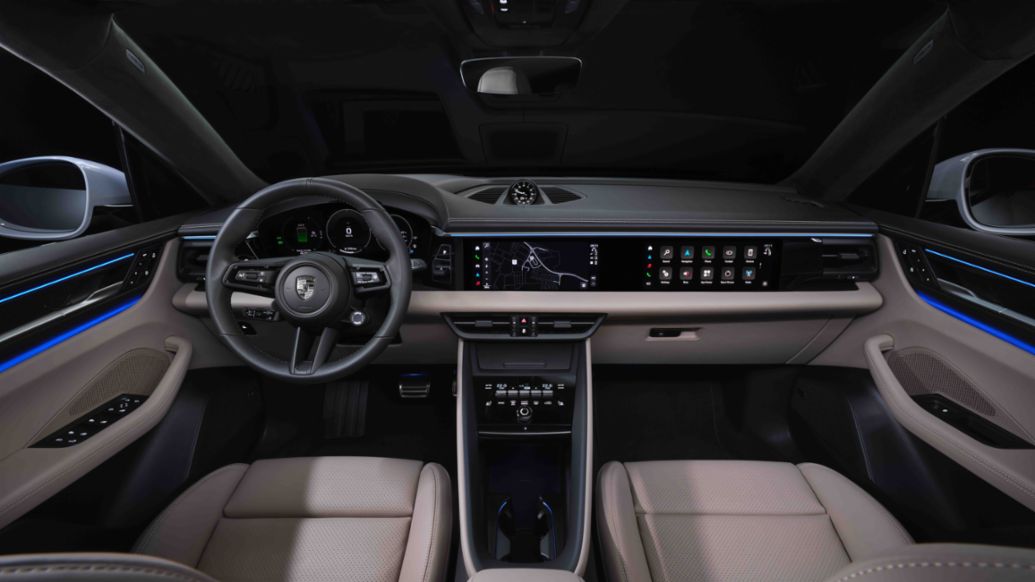
The Porsche Driver Experience, however, features a head-up display with augmented reality technology. It also features navigation arrows which are visually integrated into the real world.
Both Android Automotive OS and Apple CarPlay are featured in the Macan EV’s new-generation infotainment system. Porsche Communication Management will allow the driver to say “Hey Porsche” to access anything from suggested routes, charging stops, and other crucial information.
Pricing and Availability
Porsche plans to bring the Macan to market within the second half of the year, but customers can order it immediately.
The Macan 4 is priced at just $78,800, while the Turbo configuration will be $105,300. Each price does not include the $1,650 delivery, processing, and handling fee.
I’d love to hear from you! If you have any comments, concerns, or questions, please email me at joey@teslarati.com. You can also reach me on Twitter @KlenderJoey, or if you have news tips, you can email us at tips@teslarati.com.

Elon Musk
Elon Musk confirms xAI’s purchase of five 380 MW natural gas turbines
The deal, which was confirmed by Musk on X, highlights xAI’s effort to aggressively scale its operations.

xAI, Elon Musk’s artificial intelligence startup, has purchased five additional 380 MW natural gas turbines from South Korea’s Doosan Enerbility to power its growing supercomputer clusters.
The deal, which was confirmed by Musk on X, highlights xAI’s effort to aggressively scale its operations.
xAI’s turbine deal details
News of xAI’s new turbines was shared on social media platform X, with user @SemiAnalysis_ stating that the turbines were produced by South Korea’s Doosan Enerbility. As noted in an Asian Business Daily report, Doosan Enerbility announced last October that it signed a contract to supply two 380 MW gas turbines for a major U.S. tech company. Doosan later noted in December that it secured an order for three more 380 MW gas turbines.
As per the X user, the gas turbines would power an additional 600,000+ GB200 NVL72 equivalent size cluster. This should make xAI’s facilities among the largest in the world. In a reply, Elon Musk confirmed that xAI did purchase the turbines. “True,” Musk wrote in a post on X.
xAI’s ambitions
Recent reports have indicated that xAI closed an upsized $20 billion Series E funding round, exceeding the initial $15 billion target to fuel rapid infrastructure scaling and AI product development. The funding, as per the AI startup, “will accelerate our world-leading infrastructure buildout, enable the rapid development and deployment of transformative AI products.”
The company also teased the rollout of its upcoming frontier AI model. “Looking ahead, Grok 5 is currently in training, and we are focused on launching innovative new consumer and enterprise products that harness the power of Grok, Colossus, and 𝕏 to transform how we live, work, and play,” xAI wrote in a post on its website.
Elon Musk
Elon Musk’s xAI closes upsized $20B Series E funding round
xAI announced the investment round in a post on its official website.

xAI has closed an upsized $20 billion Series E funding round, exceeding the initial $15 billion target to fuel rapid infrastructure scaling and AI product development.
xAI announced the investment round in a post on its official website.
A $20 billion Series E round
As noted by the artificial intelligence startup in its post, the Series E funding round attracted a diverse group of investors, including Valor Equity Partners, Stepstone Group, Fidelity Management & Research Company, Qatar Investment Authority, MGX, and Baron Capital Group, among others.
Strategic partners NVIDIA and Cisco Investments also continued support for building the world’s largest GPU clusters.
As xAI stated, “This financing will accelerate our world-leading infrastructure buildout, enable the rapid development and deployment of transformative AI products reaching billions of users, and fuel groundbreaking research advancing xAI’s core mission: Understanding the Universe.”
xAI’s core mission
Th Series E funding builds on xAI’s previous rounds, powering Grok advancements and massive compute expansions like the Memphis supercluster. The upsized demand reflects growing recognition of xAI’s potential in frontier AI.
xAI also highlighted several of its breakthroughs in 2025, from the buildout of Colossus I and II, which ended with over 1 million H100 GPU equivalents, and the rollout of the Grok 4 Series, Grok Voice, and Grok Imagine, among others. The company also confirmed that work is already underway to train the flagship large language model’s next iteration, Grok 5.
“Looking ahead, Grok 5 is currently in training, and we are focused on launching innovative new consumer and enterprise products that harness the power of Grok, Colossus, and 𝕏 to transform how we live, work, and play,” xAI wrote.
Investor's Corner
Tesla gets price target bump, citing growing lead in self-driving

Tesla (NASDAQ: TSLA) stock received a price target update from Pierre Ferragu of Wall Street firm New Street Research, citing the company’s growing lead in self-driving and autonomy.
On Tuesday, Ferragu bumped his price target from $520 to $600, stating that the consensus from the Consumer Electronics Show in Las Vegas was that Tesla’s lead in autonomy has been sustained, is growing, and sits at a multiple-year lead over its competitors.
CES 2026 validates Tesla’s FSD strategy, but there’s a big lag for rivals: analyst
“The signal from Vegas is loud and clear,” the analyst writes. “The industry isn’t catching up to Tesla; it is actively validating Tesla’s strategy…just with a 12-year lag.”
The note shows that the company’s prowess in vehicle autonomy is being solidified by lagging competitors that claim to have the best method. The only problem is that Tesla’s Vision-based approach, which it adopted back in 2022 with the Model 3 and Model Y initially, has been proven to be more effective than competitors’ approach, which utilizes other technology, such as LiDAR and sensors.
Currently, Tesla shares are sitting at around $433, as the company’s stock price closed at $432.96 on Tuesday afternoon.
Ferragu’s consensus on Tesla shares echoes that of other Wall Street analysts who are bullish on the company’s stock and position within the AI, autonomy, and robotics sector.
Dan Ives of Wedbush wrote in a note in mid-December that he anticipates Tesla having a massive 2026, and could reach a $3 trillion valuation this year, especially with the “AI chapter” taking hold of the narrative at the company.
Ives also said that the big step in the right direction for Tesla will be initiating production of the Cybercab, as well as expanding on the Robotaxi program through the next 12 months:
“…as full-scale volume production begins with the autonomous and robotics roadmap…The company has started to test the all-important Cybercab in Austin over the past few weeks, which is an incremental step towards launching in 2026 with important volume production of Cybercabs starting in April/May, which remains the golden goose in unlocking TSLA’s AI valuation.”
Tesla analyst breaks down delivery report: ‘A step in the right direction’
Tesla has transitioned from an automaker to a full-fledged AI company, and its Robotaxi and Cybercab programs, fueled by the Full Self-Driving suite, are leading the charge moving forward. In 2026, there are major goals the company has outlined. The first is removing Safety Drivers from vehicles in Austin, Texas, one of the areas where it operates a ride-hailing service within the U.S.
Ultimately, Tesla will aim to launch a Level 5 autonomy suite to the public in the coming years.
